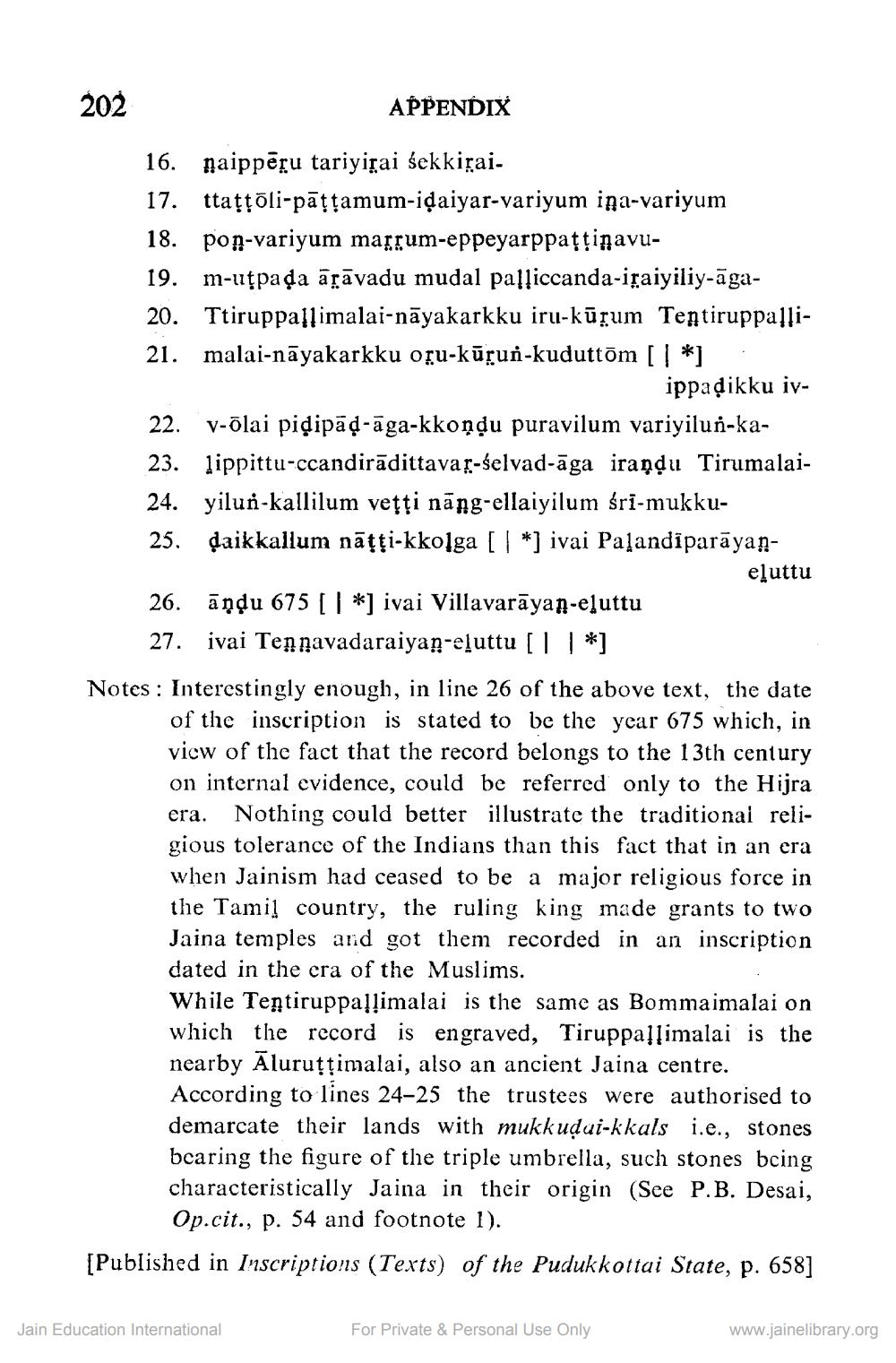________________
202
APPENDIX
16. naippēļu tariyițai śekkirai. 17. ttațțõli-pāț;amum-idaiyar-variyum ina-variyum 18. pon-variyum marrum-eppeyarppattinavu19. m-uțpada ārāvadu mudal palsiccanda-iraiyiliy-āga20. Ttiruppassimalai-nāyakarkku iru-kūrum Tentiruppaļļi21. malai-nāyakarkku oru-kūrun-kuduttom [ 1 *] .
ippadikku iv22. V-õlai piļipād-āga-kkonļu puravilum variyilun-ka23. lippittu-ccandirādittavar-selvad-āga irandu Tirumalai24. yilun-kallilum vețți nāng-ellaiyilum śri-mukku25. daikkallum nāțți-kkolga [ ] *) ivai Palandiparāyan
eluttu 26. āņdu 675 || *) ivai Villavarāyan-eluttu
27. ivai Tennavadaraiyan-eluttu [] | *] Notes : Interestingly enough, in line 26 of the above text, the date
of the inscription is stated to be the year 675 which, in vicw of the fact that the record belongs to the 13th century on internal evidence, could be referred only to the Hijra era. Nothing could better illustrate the traditional religious tolerance of the Indians than this fact that in an era when Jainism had ceased to be a major religious force in the Tamil country, the ruling king made grants to two Jaina temples and got them recorded in an inscription dated in the era of the Muslims. While Tentiruppallimalai is the same as Bommaimalai on which the record is engraved, Tiruppassimalai is the nearby Aluruțțimalai, also an ancient Jaina centre. According to lines 24-25 the trustees were authorised to demarcate their lands with mukkudui-kkals i.e., stones bcaring the figure of the triple umbrella, such stones being characteristically Jaina in their origin (See P.B. Desai,
Op.cit., p. 54 and footnote 1). [Published in Inscriptions (Texts) of the Pudukkottai State, p. 658]
Jain Education International
For Private & Personal Use Only
www.jainelibrary.org




